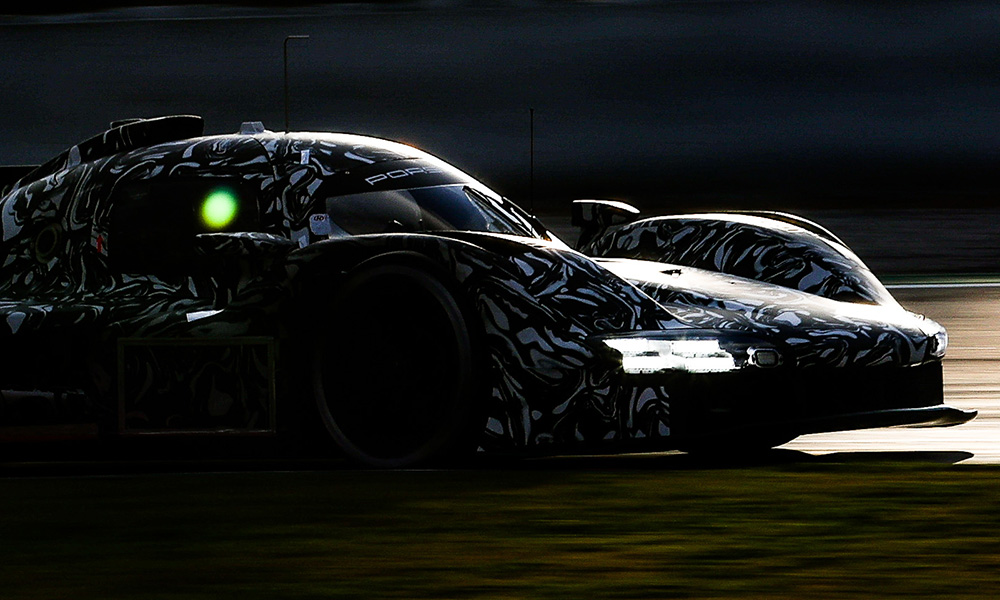
Photo: Porsche
IMSA is working to “revitalize” and introduce “new tools” to its Balance of Performance process in order to help regulate the LMDh and LMH platforms according to its technical director Matt Kurdock.
The new-for-2023 GTP class in the WeatherTech SportsCar Championship will be open to both formulas, although initially only expected to feature cars built to the LMDh ruleset in its first season, with confirmed LMDh cars from Acura, BMW, Cadillac and Porsche.
Kurdock, who sits at the head of the IMSA technical committee, told Sportscar365: “Right now we’re spending a lot of time and energy on the GTP BoP philosophies that we’ll use.
“Even with LMDh, the philosophy is to assign power levels based on torque at the driveshafts. So now we’re assigning the output instead of assigning an input to the engine, which is an air restrictor or boost level.
“I think just having that tool will be a big advantage for us going forward.
“Even if we assign every car at the same mass, same power, same downforce and drag, you would not get the same result out of every car at every circuit.
“There’s a lot of nuances to car performance on the track. There’s controlled inputs and uncontrolled inputs.
“Unfortunately the BoP table is pretty limited in what it can address.
“I think as we look at adding LMH into the mix — a different platform of car — I think that adds challenges to the BoP process that we’ve developed so far.
“We’re looking at further developing and introducing new tools into IMSA’s BoP toolbox that will allow us to regulate and keep these LMH and LMDh cars as close as they can to each other.
“Especially considering we’re going to have hybrid cars, all-wheel drive cars… It’s a layer of complexity that we haven’t had to deal with so far.”
While there hasn’t yet been a confirmed LMH manufacturer program for the WeatherTech Championship, Kurdock said they’re pushing ahead to ensure the groundwork is laid if and when a manufacturer commits.
“We have to,” he said. “Even weaving in the homologation process with the BoP process is necessary.
“For every platform we’ll see in IMSA, it all has to go through a Windshear wind tunnel evaluation and that will directly feed into a simulation process and how we start the BoP.
“We’re lucky in that we have the torque sensors on this new platform as that makes it a little easier to come up with the starting power levels than having to go through a full dyno process like we do in the DPi and GTD cars right now.”
Kurdock said its cooperation with the ACO on data sharing will also help through the new process.
“We’re collaborating with our partners at the ACO and speaking with the FIA on BoP of LMH and LMDh and sharing our notes on this and trying to come up with a revitalized BoP process that allows us to get it as close as we can at the first race out,” he said.
“We’re certainly not taking the task lightly and recognize there’s a lot of pressure in that and that very large investments are being made to join the GTP class with a LMDh or LMH platform.
“It’s the IMSA technical committee’s obligation to get the balance as close as we can. We look forward to the challenge.”
IMSA to Play Supporting Role in LMDh Group Testing
Kurdock said IMSA’s technical team will be present at upcoming group LMDh tests this summer although only in a supporting capacity and not to collect data for the BoP process.
Among the sanctioning body’s responsibilities include ensuring components such as the spec hybrid system, Michelin tires and fuel supply are all provided to teams and manufacturers on an equal basis.
“That’s really the role that IMSA is playing at some of the early testing,” Kurdock said.
“We’re simply just trying to get miles on the car and to learn where the issues are and to be there to support getting the right solutions in place.
“There will be opportunities to collect performance data from the cars that will be later in the process. Right now it’s early days.
“For sure when the cars are fully homologated and when they’ve been through their validation processes and we get to where we can start to assessing the configurations on the race track. We’ve got our infrastructure in place.
“Obviously the Roar is another opportunity for us to be able to correlate some of the performance predictions we’ll have and to correlate the simulation models.
“I think right now the focus is on getting the development of the cars in the right area.
“As we get past that point, we’ll start to focus more on making sure that the initial BoP is the performance balance that gets us a competitive race at Daytona.”





















